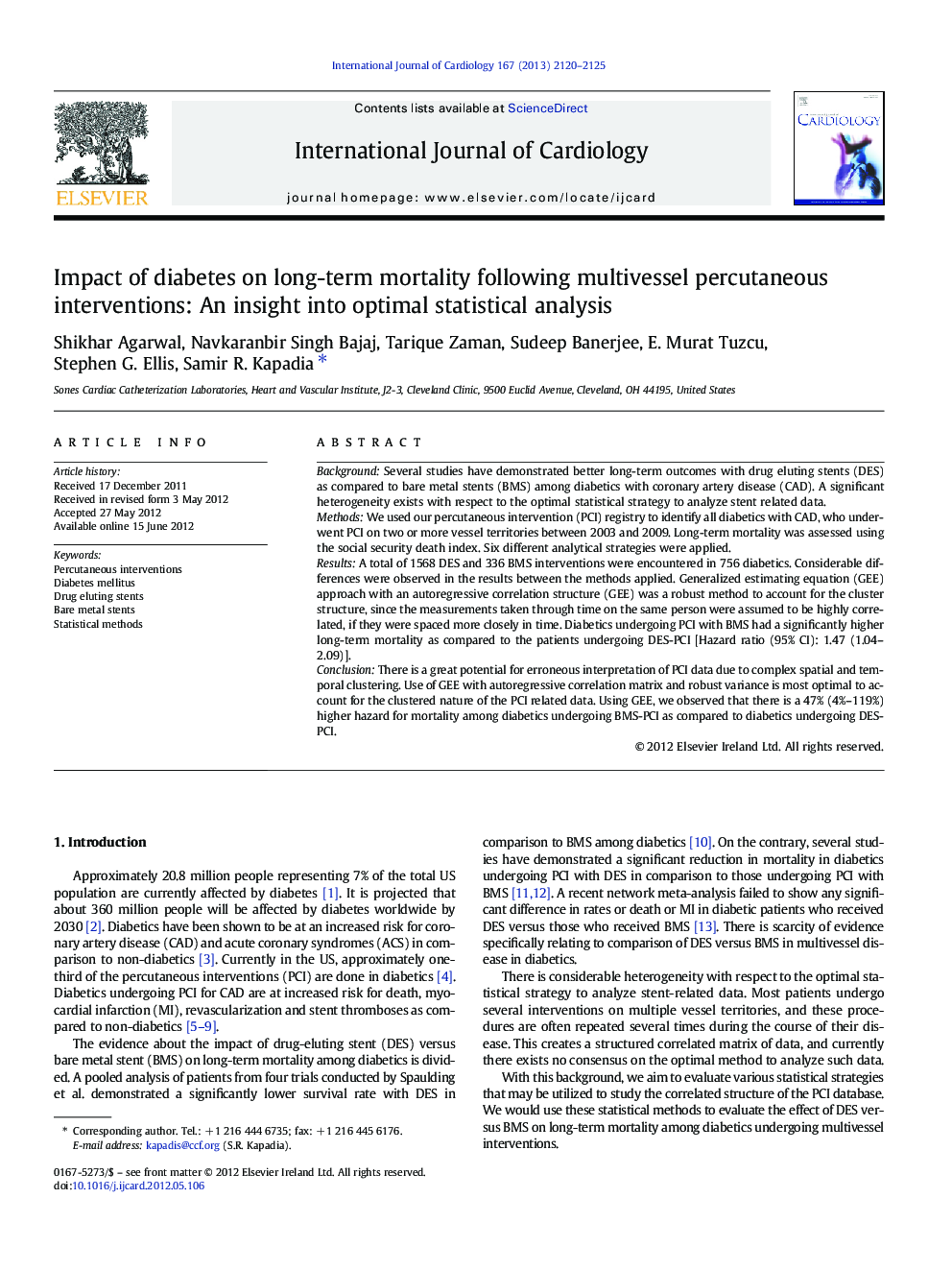| Article ID | Journal | Published Year | Pages | File Type |
|---|---|---|---|---|
| 5977263 | International Journal of Cardiology | 2013 | 6 Pages |
BackgroundSeveral studies have demonstrated better long-term outcomes with drug eluting stents (DES) as compared to bare metal stents (BMS) among diabetics with coronary artery disease (CAD). A significant heterogeneity exists with respect to the optimal statistical strategy to analyze stent related data.MethodsWe used our percutaneous intervention (PCI) registry to identify all diabetics with CAD, who underwent PCI on two or more vessel territories between 2003 and 2009. Long-term mortality was assessed using the social security death index. Six different analytical strategies were applied.ResultsA total of 1568 DES and 336 BMS interventions were encountered in 756 diabetics. Considerable differences were observed in the results between the methods applied. Generalized estimating equation (GEE) approach with an autoregressive correlation structure (GEE) was a robust method to account for the cluster structure, since the measurements taken through time on the same person were assumed to be highly correlated, if they were spaced more closely in time. Diabetics undergoing PCI with BMS had a significantly higher long-term mortality as compared to the patients undergoing DES-PCI [Hazard ratio (95% CI): 1.47 (1.04-2.09)].ConclusionThere is a great potential for erroneous interpretation of PCI data due to complex spatial and temporal clustering. Use of GEE with autoregressive correlation matrix and robust variance is most optimal to account for the clustered nature of the PCI related data. Using GEE, we observed that there is a 47% (4%-119%) higher hazard for mortality among diabetics undergoing BMS-PCI as compared to diabetics undergoing DES-PCI.
